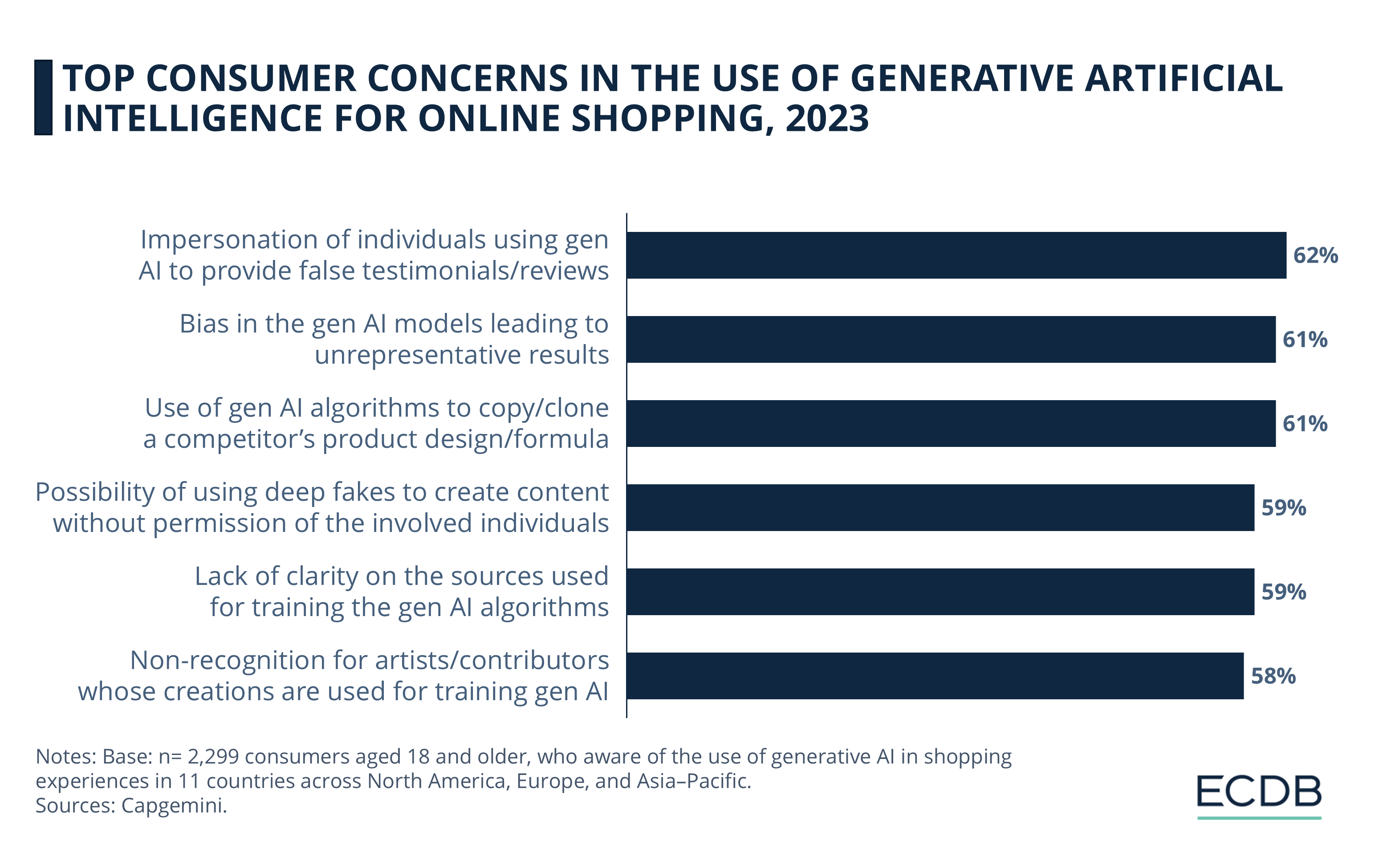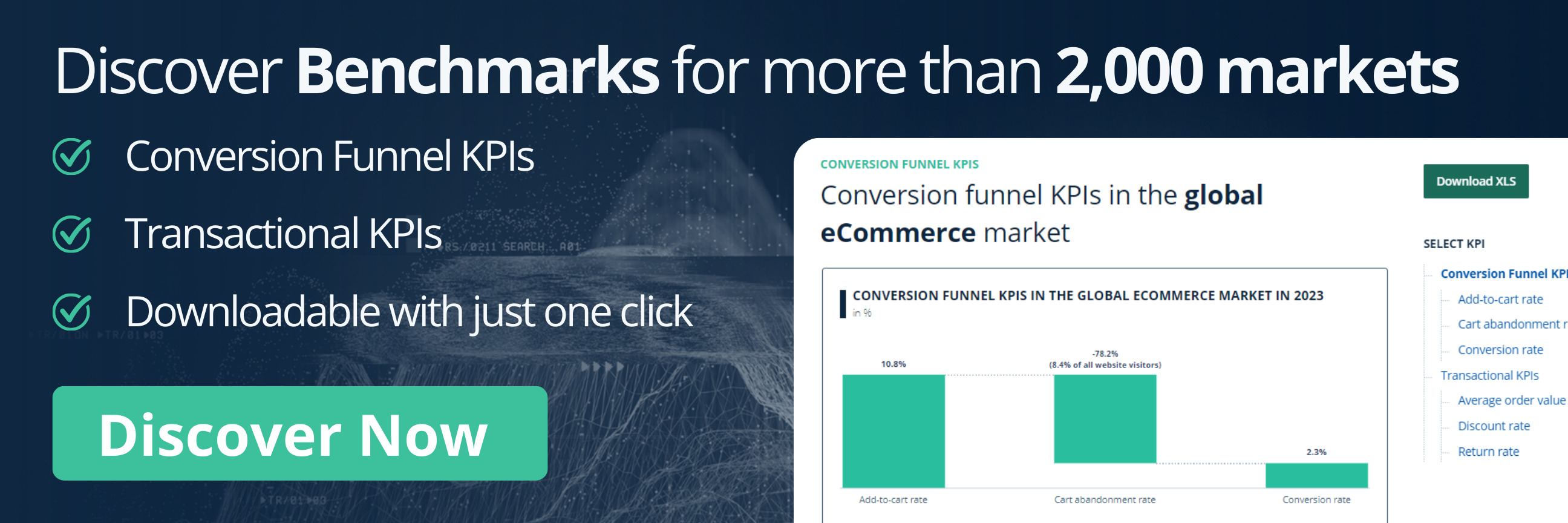eCommerce: Fake Reviews
FTC’s New Ban in Effect & How to Spot Fake Reviews in Online Shopping
FTC’s new rule bans fake reviews, imposing fines up to US$50K per violation. But how can you spot fake online reviews and keep your online shopping safe?
Article by Cihan Uzunoglu | October 25, 2024Download
Coming soon
Share

Fake Reviews in Online Shopping: Key Insights
FTC’s New Ban in Effect: Effective in October, the FTC’s rule against fake online reviews introduces fines of up to US$50,000 per violation, aiming to strengthen consumer confidence by eliminating deceptive practices in eCommerce.
How to Identify Fake Online Reviews: To steer clear of deceptive reviews, watch for clustered posting dates, repetitive language, inactive or anonymous reviewer profiles, reused reviews across unrelated products, and feedback influenced by incentives.
In August, ECDB covered the initial announcement of the Federal Trade Commission's (FTC) rule targeting fake online reviews, highlighting its potential to reshape consumer trust in eCommerce. We reported on the rule's strong stance against deceptive practices: prohibitions on fake, AI-generated reviews, incentive-based testimonials, and intimidation tactics to remove negative feedback.
The rule, which took effect in October, now carries civil penalties for non-compliance, a move FTC Chair Lina Khan described as essential to protecting consumers and fostering a fairer online market.
FTC’s New Rules and Penalties
Under the FTC’s new regulation, businesses can face fines of up to US$50,000 per violation for engaging in deceptive review practices. The rule specifically bans several common methods of review manipulation: purchasing positive or negative reviews to influence consumer opinion, misrepresenting in-house reviews as independent, and creating AI-generated reviews, testimonials, or follower counts to build false credibility.
The FTC’s focus on eliminating these tactics reflects its commitment to consumer protection, with studies showing that misleading reviews could cost consumers 12 cents for every dollar spent. Consumers who encounter any of these practices are encouraged to report them through the FTC’s fraud page.
How to Spot Fake Reviews in Online Shopping
As online shopping grows, fake reviews remain a challenge for consumers. Here are five tips to help you identify deceptive reviews and make more informed decisions:
Check Review Dates: Multiple reviews posted in a short timeframe could suggest they were purchased or fabricated, especially if they follow a similar script.
Look for Repetitive Language: Reviews using identical phrases may indicate that they were written by bots or paid writers, rather than real customers.
Scrutinize Reviewer Profiles: Fake accounts often lack profile pictures, have generic usernames, or show minimal review activity outside of a few products.
Beware of Review Hijacking: Sometimes, reviews for different products are repurposed to boost ratings on newer items. Ensure that reviews specifically reference the product you're considering.
Watch for Incentive-Driven Feedback: Some reviews may come from users who received the product for free or were incentivized to write a positive review. These may not offer genuine consumer insights.
By staying vigilant with these checks, shoppers can reduce the risk of being misled by fake reviews and enjoy a safer, more reliable online shopping experience.

The Cost of Distrust: Cart Abandonment
in eCommerce
The rise of fake reviews and deceptive practices not only impacts consumer trust but may also contribute to a growing trend in cart abandonment. ECDB data reveals a steady increase in global cart abandonment rates, emphasizing the importance of addressing trust in the checkout process:

Ongoing Increase: From 2020 to 2023, global cart abandonment rose from 75% to 78%, reflecting more shoppers adding items to their cart but hesitating to complete purchases – often due to concerns about product authenticity and reliability.
Lost Sales: Rising abandonment rates underscore the financial impact of lost consumer trust, pointing to the need for credible reviews and transparent practices to turn browsing into actual buying.
AI Comes with Trust Issues
Why do we need to talk about the new FTC rule? Because fake reviews have been causing problems for a while now, and it doesn't seem like they're going away. On top of that, with AI improving at a dizzying pace, it sometimes feels like we can't trust anything we see online.
Valuable Insights: Our data-driven rankings are regularly refreshed to provide you with crucial insights for your business. Find out which stores and companies are performing will in the eCommerce space and which categories are topping the sales charts. Stay ahead of the market with our rankings for companies, stores, and marketplaces.
In fact, consumer concerns around the use of generative AI in eCommerce underscore why this regulation is critical. Capgemini data from 2023 shows a strong focus on AI-driven issues, with fake reviews topping the list:

The leading concern, with 62% of consumers worried, involves the impersonation of individuals to generate false reviews or testimonials, heightening the risk of misleading buyers.
Bias in generative AI models and AI algorithms cloning competitor designs are both cited by 61% of consumers.
59% of consumers are concerned about the misuse of deepfakes to create unauthorized content and the opaque sources used for AI training. Additionally, 58% highlight the lack of recognition for artists whose work feeds AI algorithms.
Fake Reviews in Online Shopping: Wrap-Up
The FTC’s new rule is a substantial step toward restoring transparency in eCommerce, targeting a problem that has eroded consumer trust for years. As deceptive tactics like fake reviews and AI-generated testimonials become more sophisticated, regulations like these set a clear boundary, protecting consumers and encouraging brands to prioritize authenticity.
Sources: Fast Company, WCPO, The Register, WPTV, Capgemini, Statista, ECDB

Click here for
more relevant insights from
our partner Mastercard.
Related insights
Deep Dive
Next Generation eCommerce: Key Trends Shaping the New Age of Online Retail
Next Generation eCommerce: Key Trends Shaping the New Age of Online Retail
Deep Dive
Google's AI Project Jarvis Could Change Online Shopping
Google's AI Project Jarvis Could Change Online Shopping
Deep Dive
How to Avoid Online Shopping Scams Ahead of the Holiday Season
How to Avoid Online Shopping Scams Ahead of the Holiday Season
Deep Dive
Artificial Intelligence in Italy eCommerce: Consumer Behavior & Preferences
Artificial Intelligence in Italy eCommerce: Consumer Behavior & Preferences
Deep Dive
Amazon’s New AI Assistant Project Amelia Will Support Third-Party Sellers
Amazon’s New AI Assistant Project Amelia Will Support Third-Party Sellers
Back to main topics
